
Avoid these foods if you have a headache
You might expect a headache after staring at a screen all day or if you haven’t gotten enough sleep lately. Still, some of the more surprising headache causes you might not know could be your favourite foods and drinks. Here are the ones to avoid if you have a bad headache.
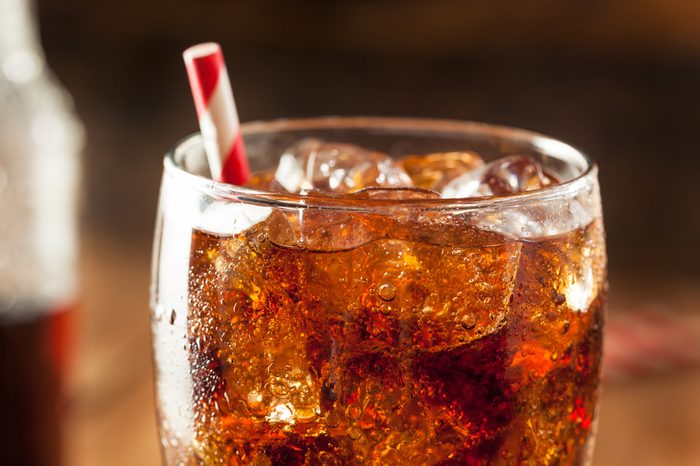
Diet soda
If you’re plagued with headaches, look at your diet soda intake. While the Dietary Guidelines Advisory Committee (DGAC) recently gave the go-ahead to consume aspartame in moderation, the FDA has received thousands of consumer complaints about aspartame due mostly to symptoms such as dizziness, memory loss, and headaches. The 2015 Scientific Report of the DGAC says, “If individuals choose to drink beverages that are sweetened with aspartame, they should stay below the aspartame Acceptable Daily Intake (ADI) of no more than 50 mg/day.” (FYI: A 12-ounce diet beverage contains approximately 180 mg of aspartame.)
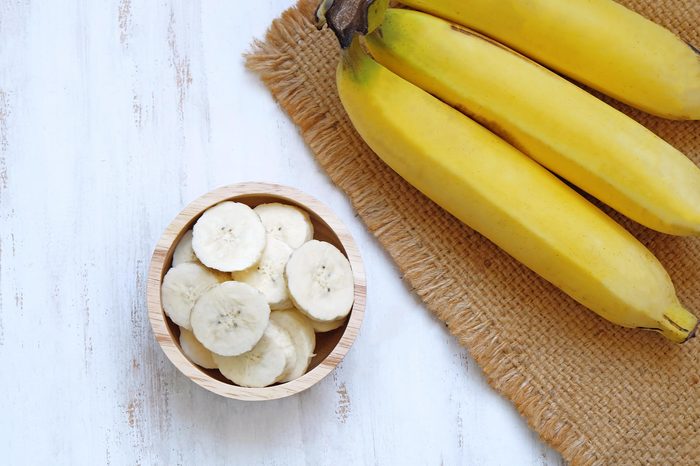
Ripe bananas and avocados
You’ve heard nutrition experts praise bananas and avocados because of their many health benefits, but ripe bananas and avocados are also high in tyramine. “Certain foods that are high in tyramine can cause migraines,” says Jennifer Kriegler, MD, of the Center for Neurological Restoration at the Cleveland Clinic. Even if you’re not prone to migraines, high tyramine levels can still cause headaches. Tyramine is an amino acid that most people can digest without issue. However, if a person has the enzyme monoamine oxidase (MAO) deficiency or if the person is taking certain antidepressants it can interfere with the breakdown process. “Ripe bananas and ripe avocados can be potent headache triggers because they contain high amounts of tyramine,” says Kriegler.
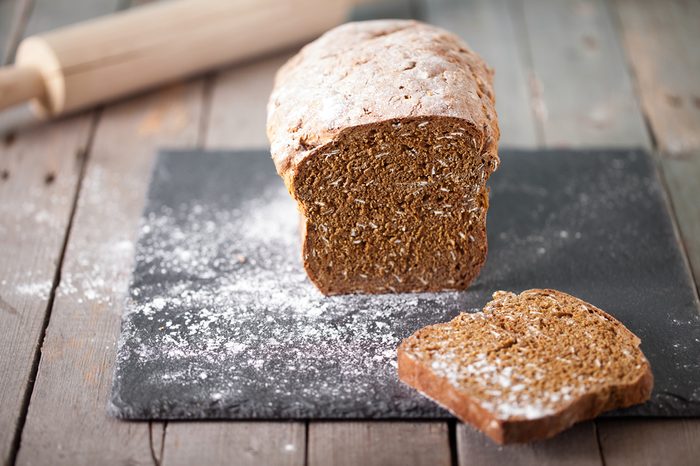
Bread
Gluten in foods like wheat, crackers, pasta, and seasoning mixes may cause digestion woes (and be dangerous for those who have celiac disease), but for some, headaches can also be a symptom of gluten sensitivity. Gluten is in food products made with wheat, wheat germ, rye, graham flour, crackers, pasta, and seasoning mixes, to name a few. But, according to Michael Gregor, MD, of Nutritionfacts.org, celiac disease should be ruled out before going on a gluten-free diet to address headaches. (Here’s what you need to know about a gluten-free diet.)
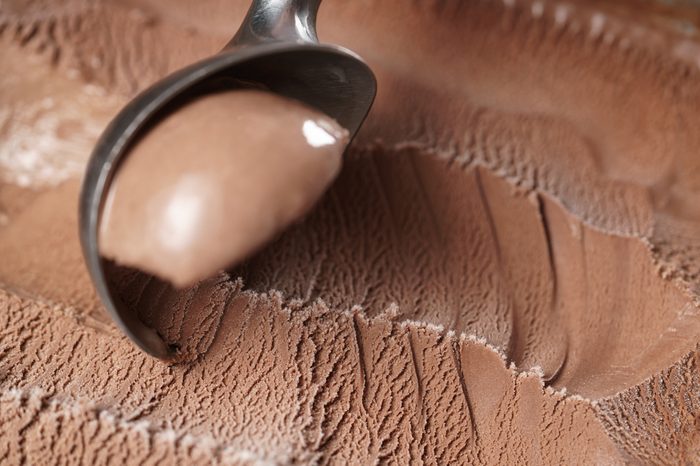
Ice cream
The first few slurps of a chocolate shake are heaven, but then suddenly your tasty adventure comes to a screeching halt when you encounter an “ice cream headache.” Luckily, the crushing pain usually subsides a minute or two later. The mystery is: Why does this come on so hard and fast and then disappear? Introducing a very cold food like ice cream or an iced drink to the throat may cause a reflex constriction of blood vessels around your head. When you think about the last “ice cream headache” you had, it does resemble a vice grip on your head. (Read up on how to get rid of every type of headache.)
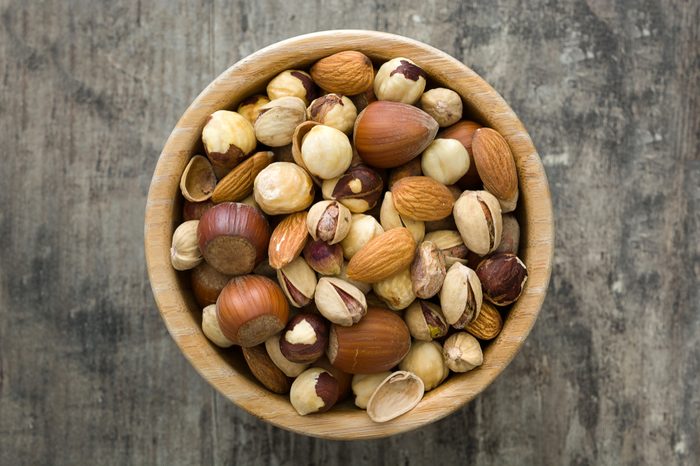
Cocktail party foods
Aged cheeses, nuts, olives, and pickled products like baby corn and pickles are the standard appetizers for many cocktail parties. However, these little bites are also high in tyramine. The National Headache Foundation suggests limiting the intake of tyramine to help control headaches. Tyramine levels can increase in foods that are aged, fermented, or stored for long periods of time.
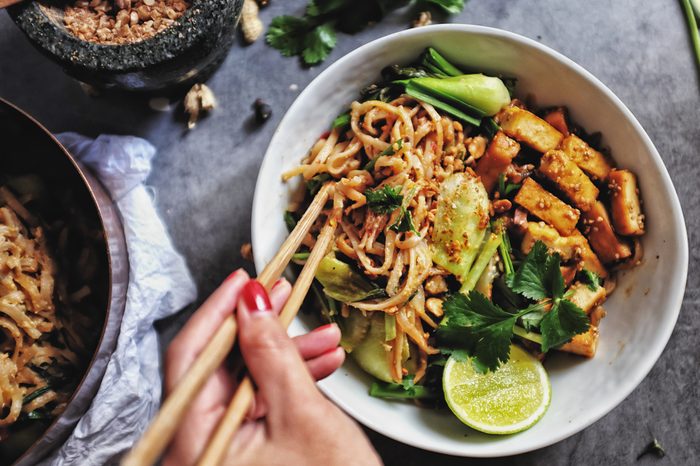
The #11 special at your favourite Chinese restaurant
Monosodium glutamate (MSG) is a flavour enhancer used to prepare many foods, but the MSG content in Chinese food may be high enough to trigger a headache. To be fair, MSG isn’t just in Chinese food. MSG can be found in everything from frozen foods, to canned soups, and snacks foods. The higher the MSG content, the riskier it could be in terms of acting as a headache trigger. People prone to migraines may also have an exacerbation of headaches after ingesting MSG, because of its effects on cranial blood vessels, according to the Delhi Psychiatric Journal.
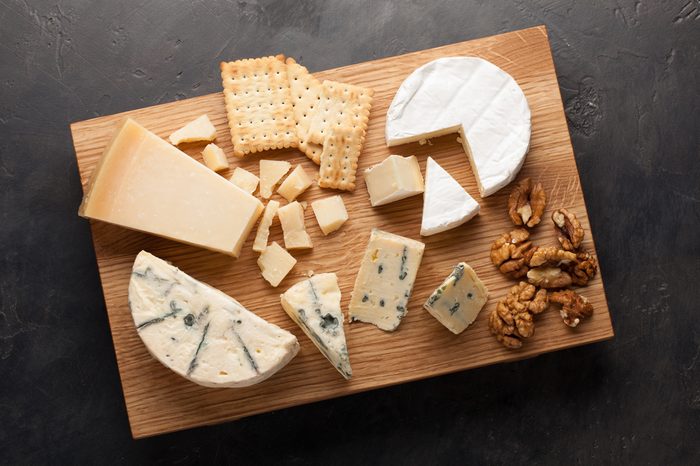
Cheese
The aging process for cheese makes it taste better but the longer it ages, the more tyramine it contains. Blue cheese, brie, cheddar, feta, mozzarella, Parmesan, and Swiss cheese have a high tyramine content, which can trigger headaches.

Red wine
Pouring a glass of wine is often something we do to unwind at the end of the day, but for some, it could give you a bigger headache than the looming deadline you left at the office. Red wine, beer, and other alcohols contain high levels of tyramine. “The reason for this is that tyramine is an amino acid that our body usually has no problem breaking down with the enzyme monoamine oxidase (MAO),” says Tory Tedrow, RD. “Unfortunately, certain circumstances can inhibit the breakdown of this amino acid, such as when a person takes certain antidepressants or if the person has an MAO deficiency.”
(Psst: This is exactly how much headache medication to take.)
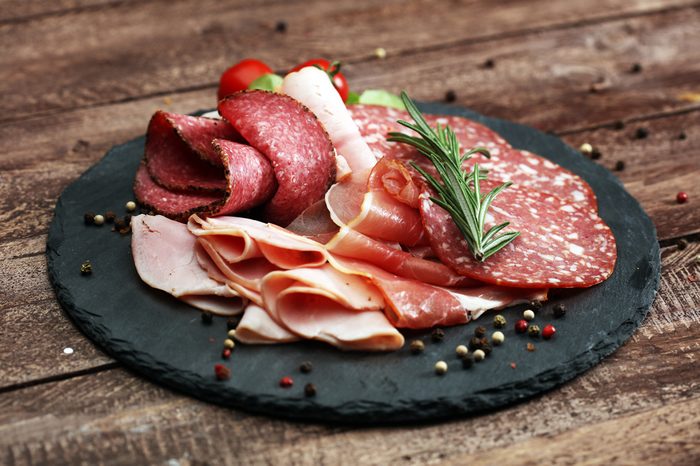
Cold cuts
Your beloved turkey sandwiches could be giving you a post-lunch headache. The high levels of tyramine and food additives like nitrates or nitrites can increase blood flow to the brain in some people. A nitrate-induced headache is no picnic because they usually cause pain on both sides on the head. (Also, did you know acupuncture can help cure migraines?)
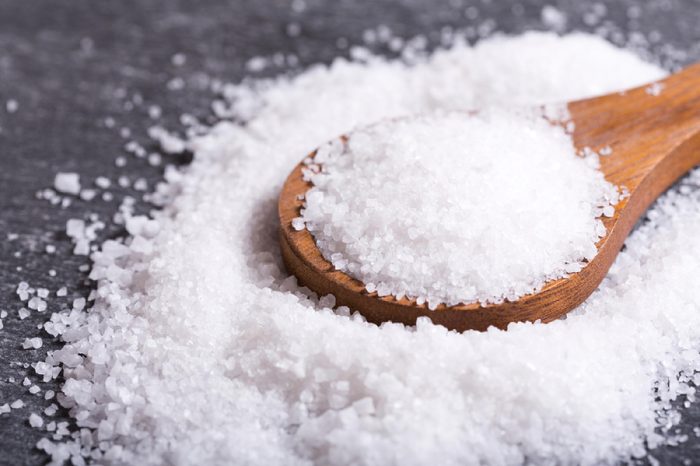
Salt
Sodium is sneaky. “A large amount of sodium in the American diet comes from some processed, prepackaged, and restaurant foods. Some people may not realize that cheese, canned soups and vegetables, frozen entrees, boxed macaroni and cheese contain sodium,” says Leigh Tracy, RD, a dietitian at The Center for Endocrinology at Mercy Medical Center in Baltimore. “A study last year suggested a link between high sodium intake and the occurrence of headaches; however, it is unclear exactly what happens in the body and more research is needed,” says Tracy.
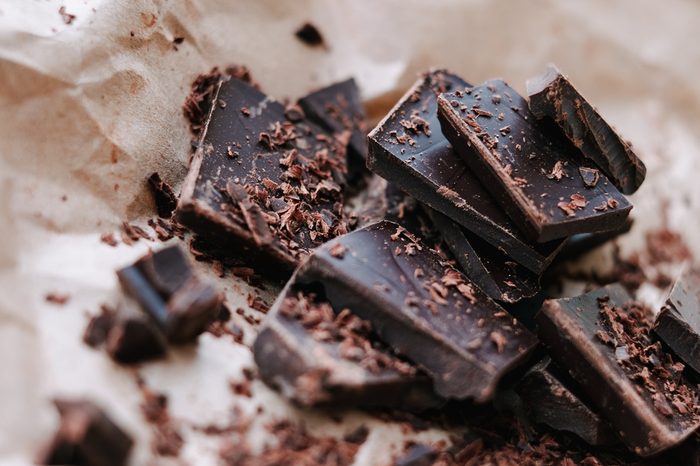
Chocolate
Sorry, but yes: This delicious dose of happiness could cause a headache. Chocolate contains a few substances that may be to blame: caffeine, tyramine, and phenylethylamine (a neurotransmitter that has stimulating effects). While this combination may make some people swoon, in others, it is a formula for a headache.
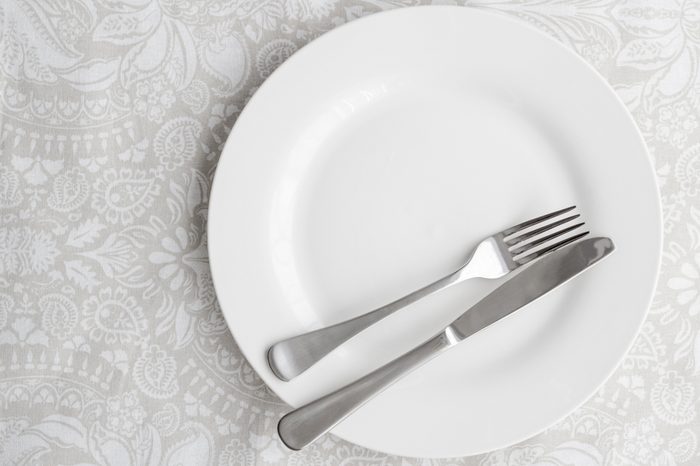
No food
Speaking of foods, you should eat something. Skipping meals could lead to headaches because of low blood sugar or hypoglycemia.When you skip meals your glucose levels drop, a buildup of muscle tension occurs, and a rebound dilatation of the blood vessels ensues, all adding to a whopper of a headache, according the National Headache Foundation.

How to deal with headache food triggers
The National Headache Foundation recommends keeping a food log of the foods you have eaten before a headache. Note the time you ate and when the symptoms occurred. Identify the trigger foods and see if eliminating them from your diet reduces or eliminates your headaches.
Next, don’t miss these natural home remedies for headaches.
